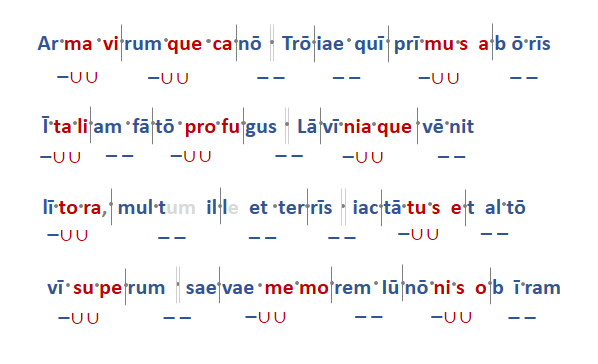|
Verse Meter
In poetry, metre ( Commonwealth spelling) or meter ( American spelling; see spelling differences) is the basic rhythmic structure of a verse or lines in verse. Many traditional verse forms prescribe a specific verse metre, or a certain set of metres alternating in a particular order. The study and the actual use of metres and forms of versification are both known as prosody. (Within linguistics, " prosody" is used in a more general sense that includes not only poetic metre but also the rhythmic aspects of prose, whether formal or informal, that vary from language to language, and sometimes between poetic traditions.) Characteristics An assortment of features can be identified when classifying poetry and its metre. Qualitative versus quantitative metre The metre of most poetry of the Western world and elsewhere is based on patterns of syllables of particular types. The familiar type of metre in English-language poetry is called qualitative metre, with stressed syllables co ... [...More Info...] [...Related Items...] OR: [Wikipedia] [Google] [Baidu] |
Poetry
Poetry (derived from the Greek ''poiesis'', "making"), also called verse, is a form of literature that uses aesthetic and often rhythmic qualities of language − such as phonaesthetics, sound symbolism, and metre − to evoke meanings in addition to, or in place of, a prosaic ostensible meaning. A poem is a literary composition, written by a poet, using this principle. Poetry has a long and varied history, evolving differentially across the globe. It dates back at least to prehistoric times with hunting poetry in Africa and to panegyric and elegiac court poetry of the empires of the Nile, Niger, and Volta River valleys. Some of the earliest written poetry in Africa occurs among the Pyramid Texts written during the 25th century BCE. The earliest surviving Western Asian epic poetry, the '' Epic of Gilgamesh'', was written in Sumerian. Early poems in the Eurasian continent evolved from folk songs such as the Chinese ''Shijing'', as well as religious hymns (the S ... [...More Info...] [...Related Items...] OR: [Wikipedia] [Google] [Baidu] |
Dactylic Hexameter
Dactylic hexameter (also known as heroic hexameter and the meter of epic) is a form of meter or rhythmic scheme frequently used in Ancient Greek and Latin poetry. The scheme of the hexameter is usually as follows (writing – for a long syllable, u for a short, and u u for a position that may be a long or two shorts): :, – u u , – u u , – u u , – u u , – u u , – – Here, ", " (pipe symbol) marks the beginning of a foot in the line. Thus there are six feet, each of which is either a dactyl (– u u) or a spondee (– –). The first four feet can either be dactyls, spondees, or a mix. The fifth foot can also sometimes be a spondee, but this is rare, as it most often is a dactyl. The last foot is a spondee. The hexameter is traditionally associated with classical epic poetry in both Greek and Latin and was consequently considered to be ''the'' grand style of Western classical poetry. Some well known examples of its use are Homer's ''Iliad'' and ''Odyssey'', Apoll ... [...More Info...] [...Related Items...] OR: [Wikipedia] [Google] [Baidu] |
.jpg)
